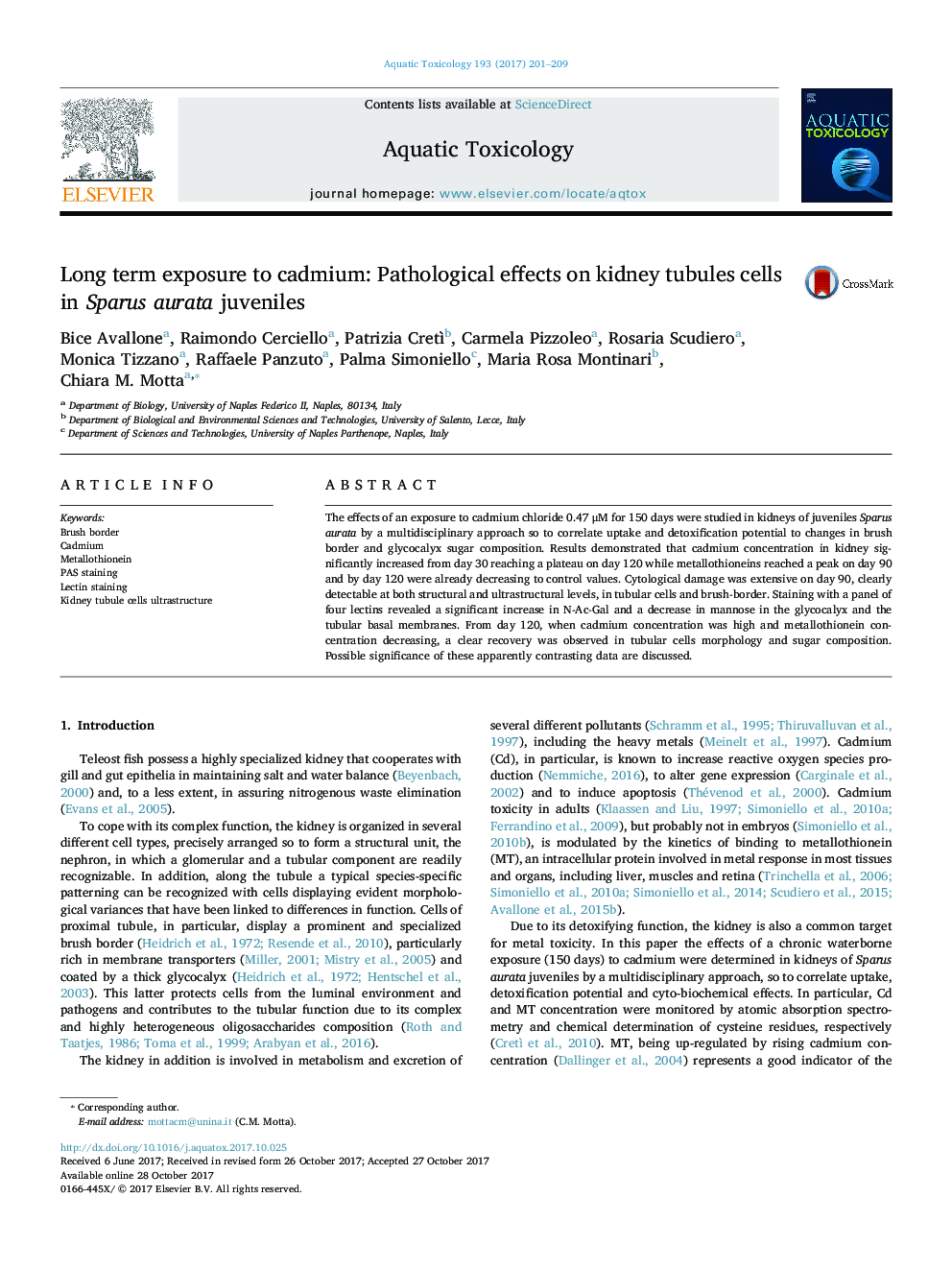| Article ID | Journal | Published Year | Pages | File Type |
|---|---|---|---|---|
| 8883947 | Aquatic Toxicology | 2017 | 9 Pages |
Abstract
The effects of an exposure to cadmium chloride 0.47 μM for 150 days were studied in kidneys of juveniles Sparus aurata by a multidisciplinary approach so to correlate uptake and detoxification potential to changes in brush border and glycocalyx sugar composition. Results demonstrated that cadmium concentration in kidney significantly increased from day 30 reaching a plateau on day 120 while metallothioneins reached a peak on day 90 and by day 120 were already decreasing to control values. Cytological damage was extensive on day 90, clearly detectable at both structural and ultrastructural levels, in tubular cells and brush-border. Staining with a panel of four lectins revealed a significant increase in N-Ac-Gal and a decrease in mannose in the glycocalyx and the tubular basal membranes. From day 120, when cadmium concentration was high and metallothionein concentration decreasing, a clear recovery was observed in tubular cells morphology and sugar composition. Possible significance of these apparently contrasting data are discussed.
Related Topics
Life Sciences
Agricultural and Biological Sciences
Aquatic Science
Authors
Bice Avallone, Raimondo Cerciello, Patrizia Cretì, Carmela Pizzoleo, Rosaria Scudiero, Monica Tizzano, Raffaele Panzuto, Palma Simoniello, Maria Rosa Montinari, Chiara M. Motta,
